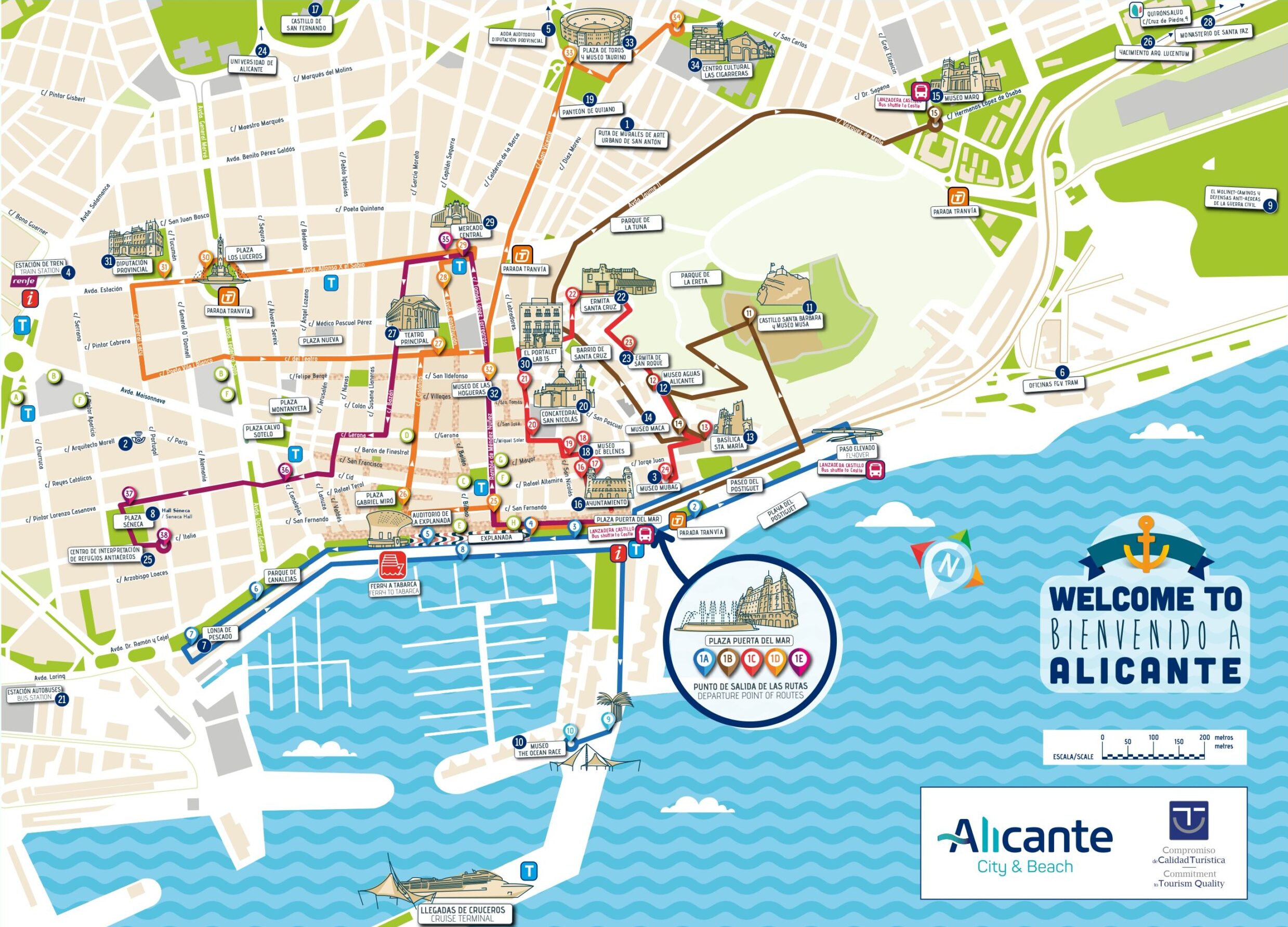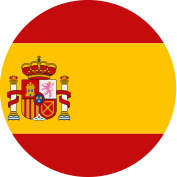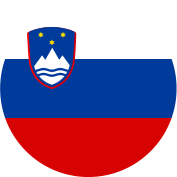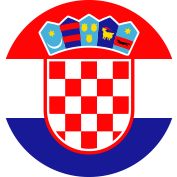ROUTE:
2.35 km
DURATION:
1 hour 30 minutes
DIFFICULTY:
Easy
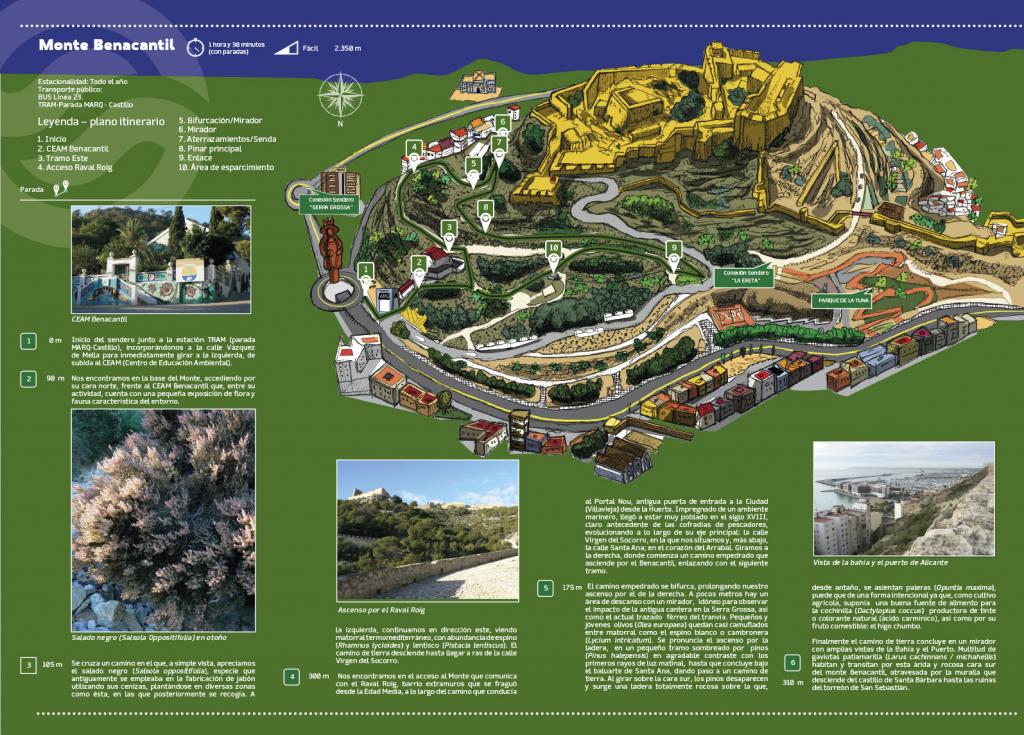
Domain and image of Alicante
Called Banu-l-Qatil by the Muslim geographer Al-Idrisi in the 12th century, the Monte Benacantil presents a situation of great strategic value, as it dominates Alicante and its plain, as well as the Bay. Although archaeological evidence points to prior occupations of Monte Benacantil from the Bronze Age to the late Roman period, the origins of the current fortress date back to the late 9th century during Muslim rule. Dominating its summit is the Santa Barbara Castle, an iconic and defining feature of the city’s skyline.
Rising 166 meters above sea level, Monte Benacantil is a rocky mass formed by intensely fractured tertiary materials, of ages belonging to the Lower and Middle Miocene; containing abundant fossil remains in its calcarenite strata. Its fracturing reveals joints and microfaults closely associated with the activity of the Crevillente Fault (Falla de Crevillente).
Regarding its fauna, stands out the variety of birds, especially the passeriformes such as the blackbird (Turdus merula), the robin (Erithacus rubecula), the house sparrow (Passer domesticus), and, within this order of birds, the finches (Fringillidae) are the most abundant species, specifically the serin (Serinus serinus) and the greenfinch (Carduelis chloris). But undoubtedly, due to the steep southern face, the most visible bird is the yellow-legged gull (Larus cachinnans / michahellis). It has been possible to certify the reproduction of eighteen bird species on Monte Benacantil, although the number should be higher, according to the Spanish Ornithological Society (SEO Alicante).
Fully integrated into the city, the fauna of the mountain is shaped by human influence, limiting the presence of mammals to smaller species or micromammals, such as the common hedgehog (Erinaceus europaeus), the pipistrelle bat (Pipistrellus pipistrellus), and the wood mouse (Apodemus sylvaticus), whose traces can be spotted on gnawed pinecones. Similarly, among the reptiles, we observe the common gecko (Tarentola mauritanica) and another smaller one, the Mediterranean house gecko (Hemidactylus turcicus), although the presence of others of considerable size such as the ocellated lizard (Lacerta lepida) has been noted, which can reach 90 cm.
Trail Stops
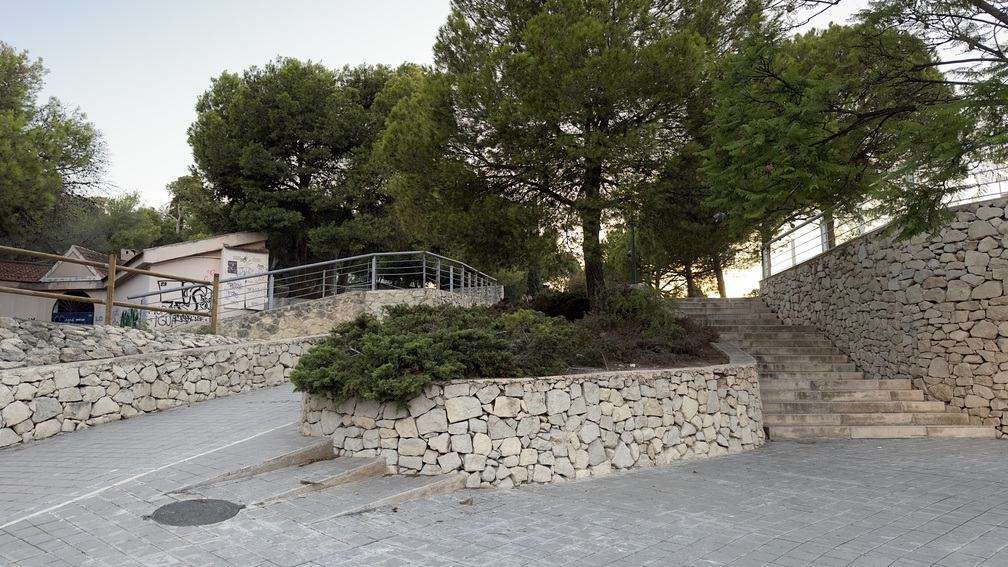
1. Start
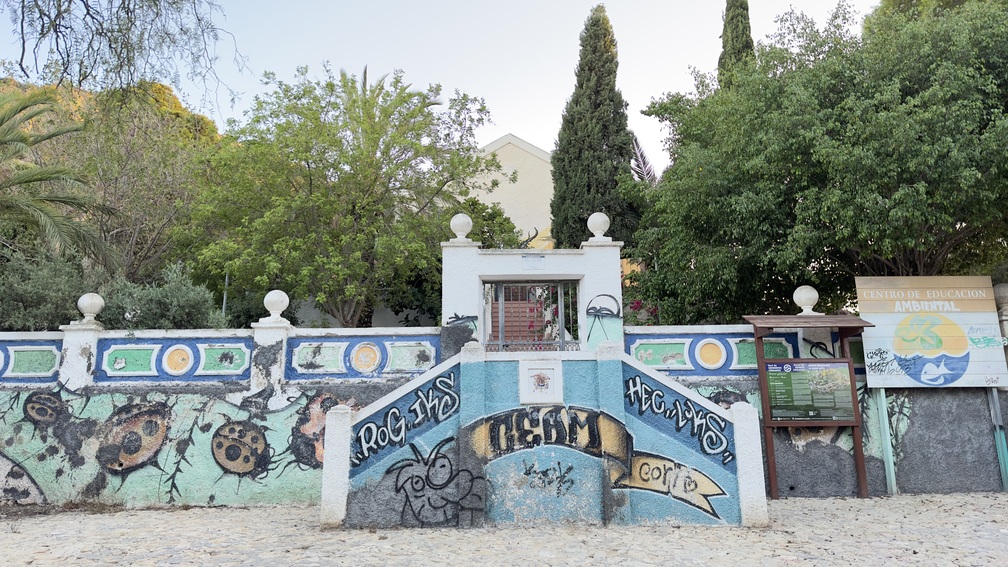
2. CEAM Benacantil
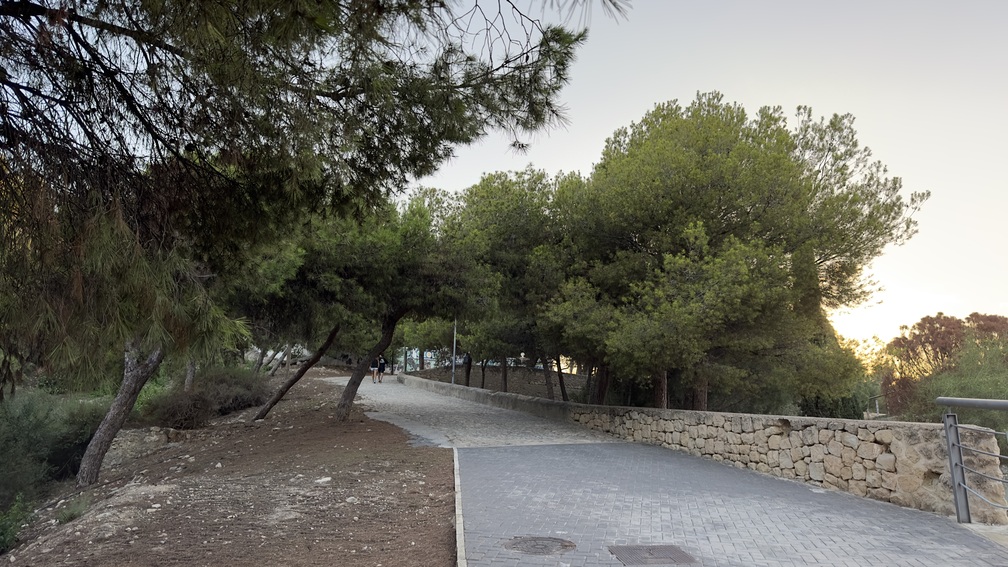
3. East Section

4. Raval Roig Access

5. Fork / Viewpoint
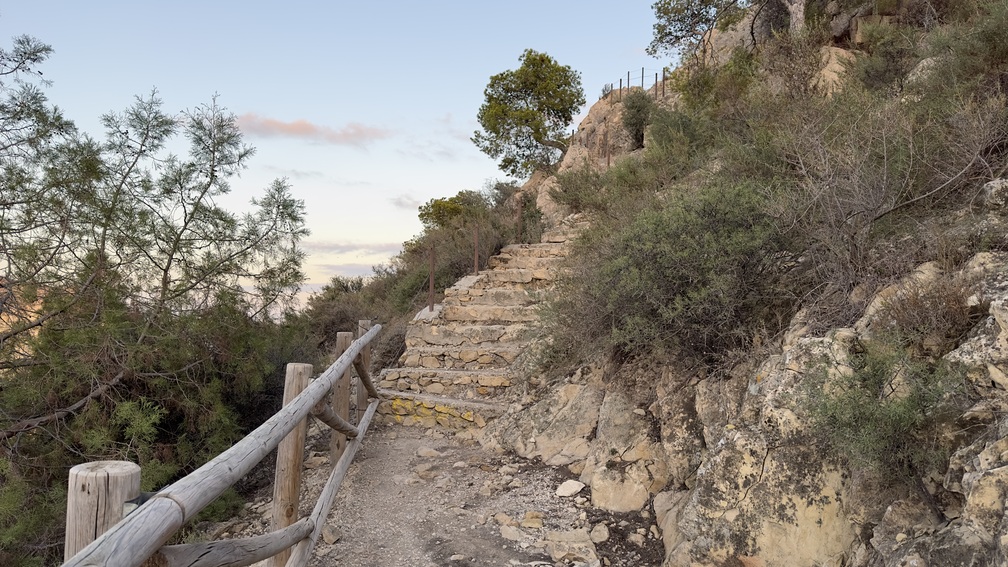
6. Viewpoint

7. Terracing / Path
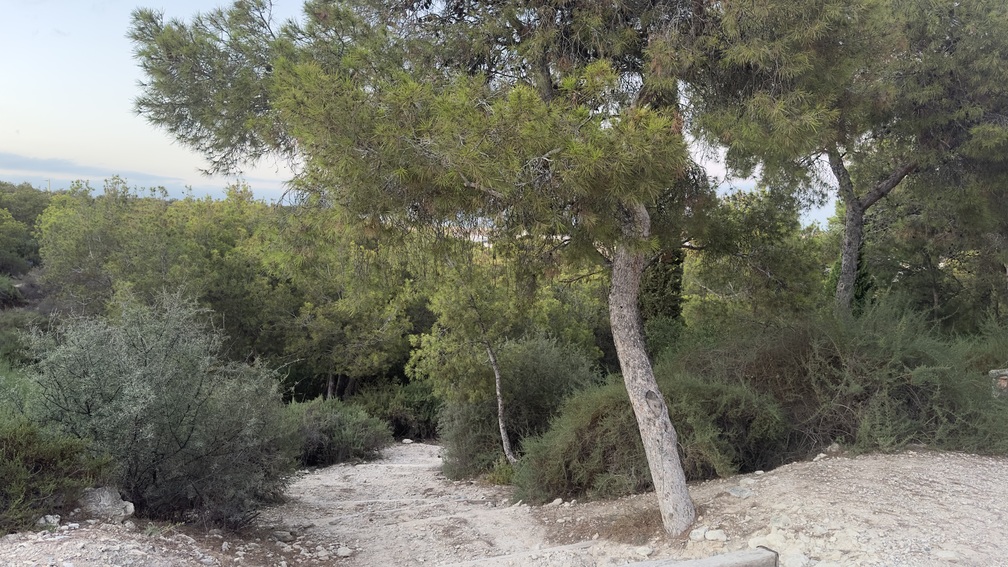
8. Main Pine Forest
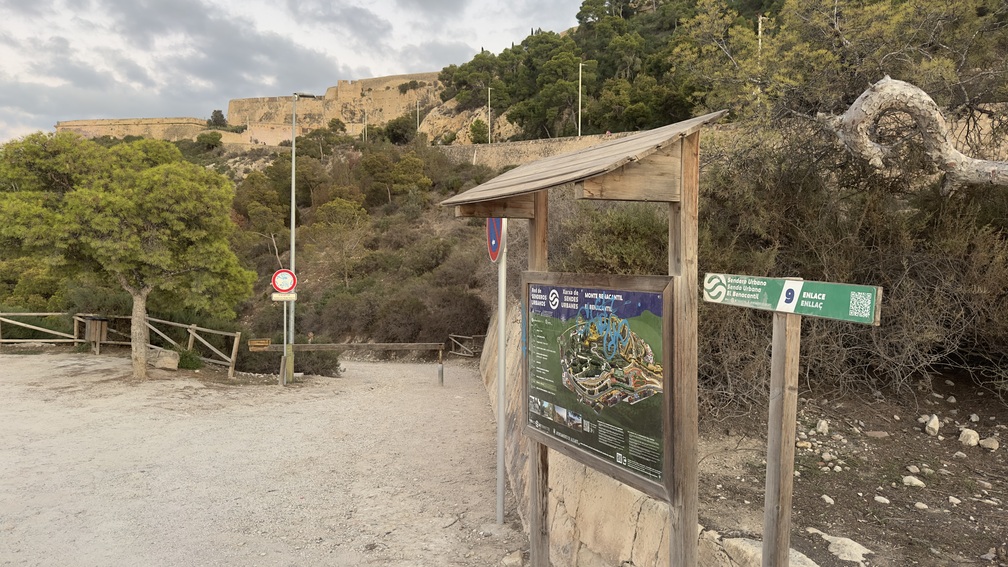
9. Link

10. Recreation Area
All Routes in Alicante
Services that might interest you
|
AGUITUR
Tourist guides accredited by the Valencian Agency of Tourism Tourist guides accredited by the Valencian Agency of Tourism |
|
ALACANT CIRCUIT
Tourist guides accredited by the Valencian Agency of Tourism Tourist guides accredited by the Valencian Agency of Tourism |
|
BLUEMED TOURS S.L
SICTED Badge The Exquisite Mediterranean CREATURISME VALENCIAN COMMUNITY CULTURAL CRATURISME VALENCIAN COMMUNITY WINE TOURISM CONVENTION BUREAU ALICANTE ALICANTE WINE ROUTE Tourist guides accredited by the Valencian Agency of Tourism Languages: English, Spanish, French, Valencian |
|
Esatur XXI, S.L.
Distintivo SICTED ISO 9001 ISO 14001 ISO 27001 Tourist guides accredited by the Valencian Agency of Tourism Tourist guides accredited by the Valencian Agency of Tourism Languages/ Languages: English, Español, Valencià |
|
FREE WALKING TOURS ALICANTE
Tourist guides accredited by the Valencian Agency of Tourism Tourist guides accredited by the Valencian Agency of Tourism |
|
OXYTOURS
Guías de Turismo acredidatos por la Agencia Valenciana de Turismo Tourist guides accredited by the Valencian Agency of Tourism |
|
TRAMUNTANA AVENTURA
Q Certificate for Tourist Quality Sicted Certificate Tourist Guides accredited by the Valencian Agency of Tourism Tourist guides accredited by the Valencian Agency of Tourism |
|
TURIGUIAS
SICTED Quality Certificate Tourist guides accredited by the Valencian Agency of Tourism Tourist guides accredited by the Valencian Agency of Tourism |
|
ULA Guides
SICTED Distinctive Tourist guides accredited by the Valencian Agency of Tourism Tourist guides accredited by the Valencian Agency of Tourism Languages/ Languages: Deutsch, English, Español, Français, Italiano, Valencià, others |
| Alicante By Bike & Rentals Tours |
| Bike Rent in Alicante |
| Blue Bike | Rental & Tour |
| Rent Point- Rent Bike Alicante |
| Bikes&City Alicante – Alquiler, rutas |
| BLUE BIKE ALICANTE |
| ESATUR |
| SEGWAY ALICANTE |
| SIS TOURS EVENTS |
| TRAMUNTANA AVENTURA |
| AKRAVIBE |
| AVENTURERO CATAMARÁN S.L |
| ALICANTE RACING QUADS RENT |
| ALIJETSET |
| AWANA |
| BLUE VALLEY |
| CENTRO BUCEO ALTAIR |
| CLUB DE SURF EL MORENO |
| EPICALBOATS |
| ENERGY ACTIVE CLUB |
| FANAUTIC CLUB ALICANTE |
| HIKINGALICANTE |
| LLOGA UN LLAÜT |
| MARINA JETS S.L |
| OXYTOURS |
| PARASAILING ALICANTE |
| SIS TOURS EVENTS |
| TERRENODEAVENTURA |
| TRAMUNTANA AVENTURA |
| ALICANTE RACING QUADS RENT |
| OXYTOURS |
| TRAMUNTANA AVENTURA |
* Important Notice
The Alicante Municipal Tourist Board is not responsible for any changes that may occur in the contact details, schedules, locations of accommodations, restaurants, tourist service companies, and transport, as well as in the cultural facilities of the city. It is recommended to verify the information in advance.

